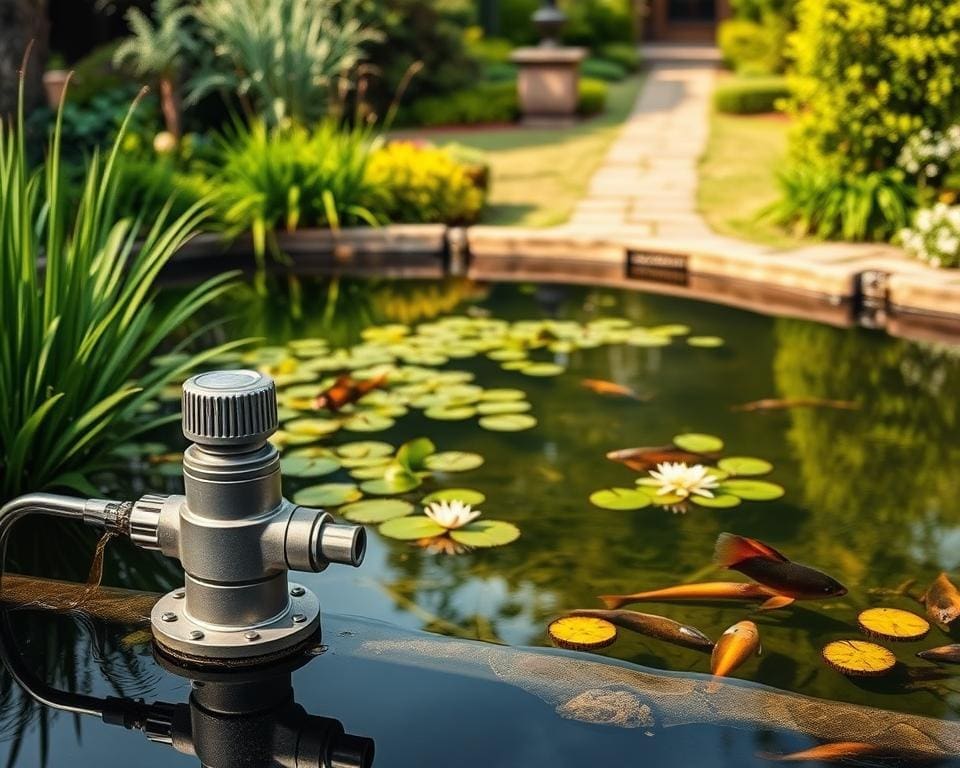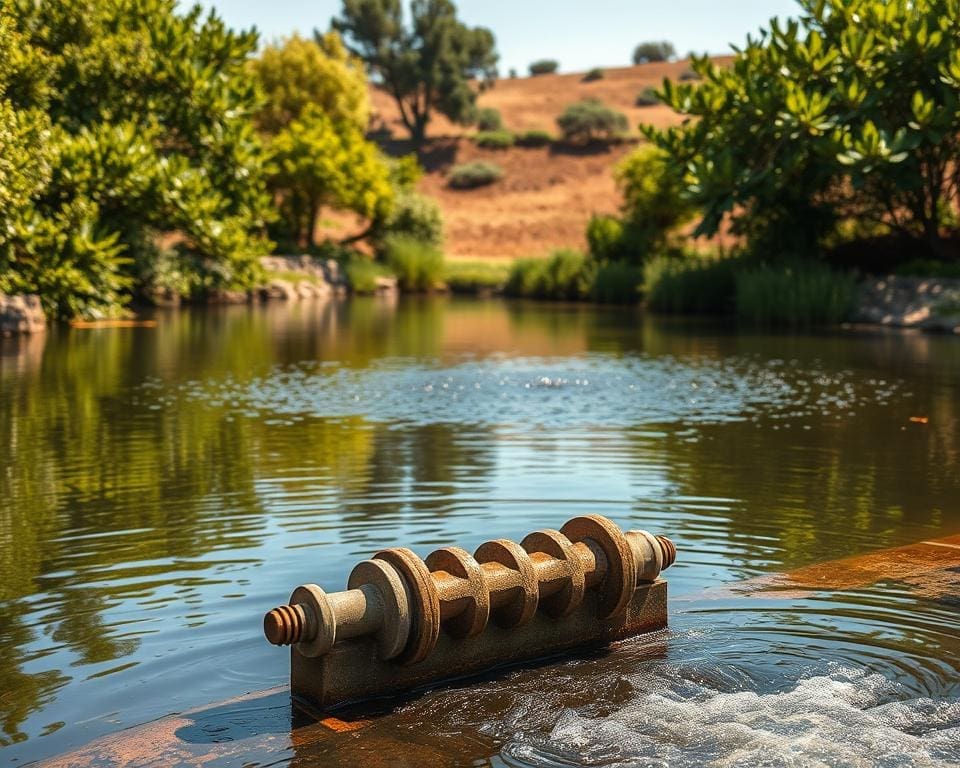Efficient pond water level management is crucial for maintaining the health and beauty of your aquatic environment. For many, the question remains: what’s the easiest way to control pond water levels? Understanding various pond water level control methods can significantly simplify this process, offering straightforward solutions for homeowners and pond enthusiasts alike.
Maintaining optimal water levels not only enhances the aesthetic appeal of your pond but also supports the thriving aquatic life within. This guide will explore accessible and uncomplicated practices for controlling water levels in ponds, ensuring that quality and ecological balance are never compromised. With the right approach, you can effortlessly create an ideal sanctuary for both wildlife and relaxation.
Understanding Pond Water Level Management
Pond water level management is crucial for sustaining the health and vitality of aquatic ecosystems. Maintaining optimal pond water levels supports biodiversity and fosters an environment where both flora and fauna can thrive. By ensuring that water levels remain stable, pond managers can prevent problems such as algal blooms and other ecological imbalances that threaten aquatic life.
The Importance of Maintaining Optimal Pond Water Levels
Maintaining optimal pond water levels is paramount for the overall health of the ecosystem. When water levels fluctuate, the balance within the pond ecosystem can be disrupted, leading to detrimental effects on fish and plant populations. Consistent water levels prevent algal blooms, which can lead to oxygen depletion in the water. Healthy pond management encourages a rich biodiversity, ensuring that various species find a suitable habitat.
Factors Influencing Pond Water Levels
A range of factors influencing pond water levels must be considered for effective pond water level management. Key elements include:
- Evaporation: High temperatures can significantly lower water levels, especially during summer months.
- Rainfall: Adequate precipitation contributes to maintaining optimal pond water levels, balancing evaporation during dry spells.
- Seasonal Changes: Seasonal shifts affect water levels, requiring adaptive management strategies to respond to these changes.
- Human Activity: Activities such as irrigation or changes in land use can impact the water levels, necessitating careful planning and monitoring.

Methods for Controlling Water Levels in Ponds
Managing pond water levels effectively is vital for maintaining a healthy aquatic environment. Techniques for controlling water levels in ponds can either be natural or artificial, each offering unique advantages tailored to specific needs. Understanding these methods will enable pond owners to choose the most suitable approach for their circumstances.
Natural Techniques for Pond Water Level Management
Natural techniques for pond water level management focus on utilising the ecosystem to achieve balance. These methods enhance the ecological integrity of the pond while promoting sustainability. Incorporating native wetland vegetation not only provides habitat for wildlife but also helps absorb and slow water flow, contributing to pond water level regulation. Furthermore, creating physical barriers, such as small berms or channels, can guide water movement effectively, reducing the risk of flooding or water loss. By fostering a thriving natural habitat, these methods yield long-term benefits for both the pond and the surrounding environment.
Artificial Methods: Pumps and Water Control Systems
Artificial methods for pond water level control deliver precision and efficiency. The implementation of pumps and automated water control systems allows for quick adjustments to water levels, adapting to varying weather conditions and evaporation rates. These systems can simplify pond maintenance, ensuring optimal conditions for both aquatic life and recreational use. While they may require an initial investment and ongoing maintenance, the reliability and control they offer can be invaluable for effective pond water level management. Choosing the right artificial method depends on the specific requirements and goals of the pond owner.
What’s the easiest way to control pond water levels?
Managing pond water levels effectively can seem daunting, yet some approaches offer simplicity and efficiency. One of the standout solutions lies in the use of automatic water level regulators, which ensure that the pond maintains a consistent level with minimal intervention. Another innovative method involves implementing a floating island system, which serves both functional and ecological purposes.
Using Automatic Water Level Regulators
Automatic water level regulators are an effective answer to the question of what’s the easiest way to control pond water levels. These devices autonomously adjust to changes in water levels, requiring very little maintenance. By setting a pre-defined water level, pond owners can practically eliminate the need for constant manual checks, thus simplifying pond management. This solution is particularly beneficial during periods of heavy rainfall or drought, as it quickly adapts to changing conditions.
Implementing a Floating Island System
Incorporating a floating island system into pond design presents another advantageous method. This natural solution not only helps in maintaining optimal water levels but also provides habitats for wildlife. The vegetation on these islands absorbs excess nutrients, which assists in maintaining water quality. Moreover, this method aligns with environmentally conscious practices while enhancing the aesthetic appeal of the pond, making it one of the popular pond water level control methods.
Advantages of Effective Pond Water Level Control
Understanding the advantages of effective pond water level control reveals its significance in fostering a thriving aquatic environment. Effective management not only benefits the ecosystem but also enhances the overall experience for those who cherish these natural landscapes.
Ecological Benefits of Maintaining Water Levels
Maintaining stable water levels offers numerous ecological benefits. Healthy water levels support diverse aquatic life, fostering habitats for fish, amphibians, and various invertebrates. This contributes to enhanced biodiversity within the ecosystem, allowing different species to flourish. Additionally, the ecological benefits of maintaining water levels include reducing the likelihood of algal blooms and controlling pest populations, creating a more balanced environment.
Enhancing Aesthetic Appeal and Usability
Well-maintained ponds not only serve ecological purposes but also significantly boost the aesthetic appeal of gardens and landscapes. The tranquil appearance of a well-regulated pond becomes a focal point, enhancing property values and creating a stunning backdrop for outdoor activities. Recreational uses, such as fishing or boating, benefit immensely from effective pond water level control, allowing people to fully enjoy their natural surroundings and promote outdoor interaction.
Tips for Managing Pond Water Levels Effectively
Effectively managing pond water levels is essential for sustaining a vibrant aquatic environment. One of the simplest tips for managing pond water levels effectively is to regularly monitor the water quality and levels, ensuring accurate assessments of fluctuations. Keeping a close watch enables timely interventions that can prevent issues like algal bloom or the growth of unwanted vegetation.
Another crucial aspect of controlling water levels in ponds involves maintaining the surrounding vegetation. Native plants play a significant role in stabilising soil, preventing erosion, and ensuring a natural filtration system. When selecting suitable flora, consider species that thrive in moist conditions; these additions not only enhance the pond’s ecosystem but also contribute to overall water quality.
In addition to natural solutions, implementing drainage systems enables better pond water level management strategies. Properly designed drainage can reduce excessive runoff during heavy rainfall, while allowing excess water to be diverted during drier periods. By combining these strategies, pond owners can empower themselves to create and maintain healthy water levels, ensuring their ponds remain a beautiful habitat for years to come.









